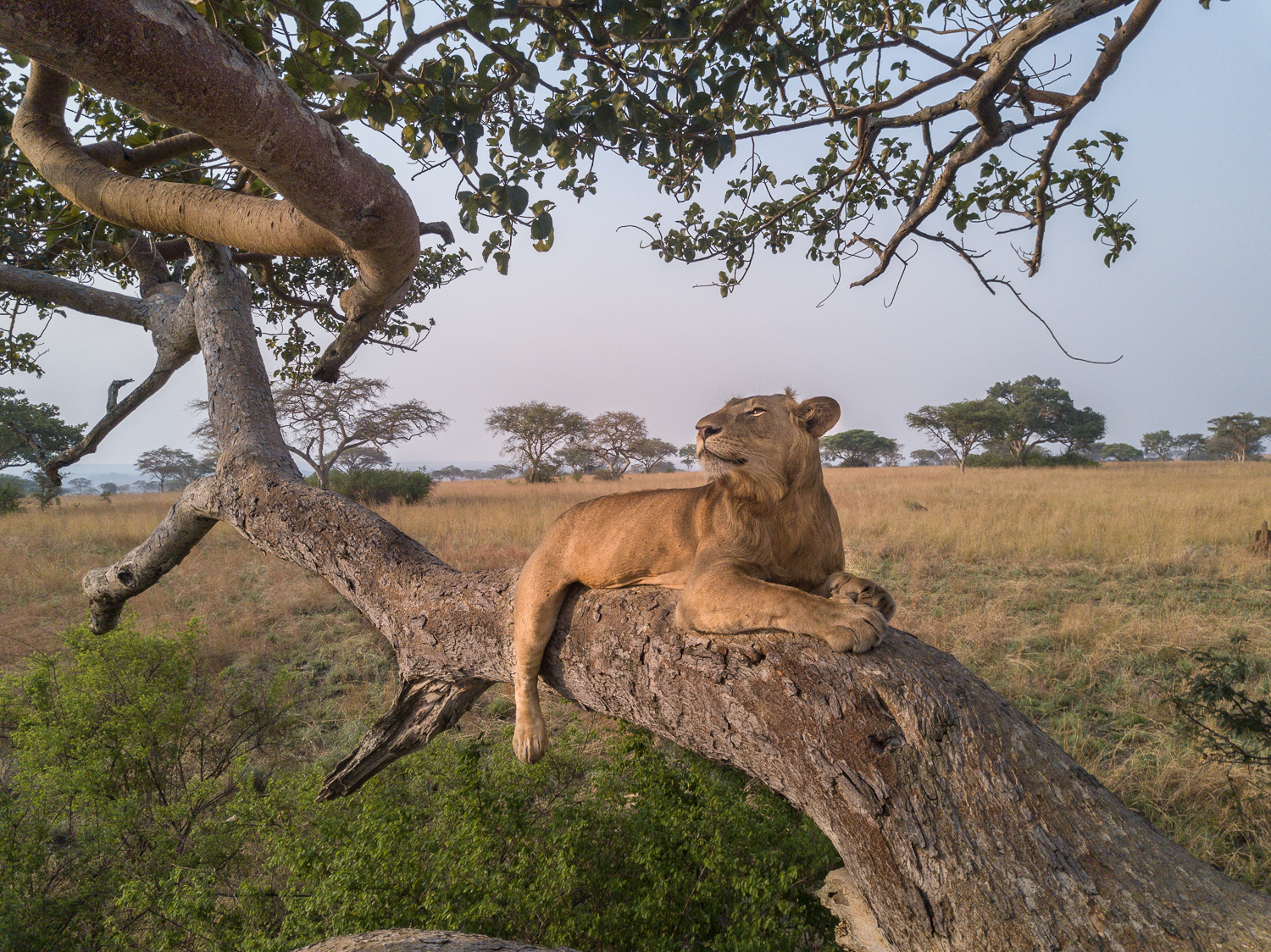Tree Climbing Lions in Ishasha
Nestled in the southern reaches of Queen Elizabeth National Park, the Ishasha Sector is one of Uganda’s most captivating safari destinations. Famous worldwide for its rare and remarkable population of tree-climbing lions, Ishasha offers an extraordinary blend of rugged wilderness, scenic beauty, and thrilling wildlife encounters. When you explore Tree Climbing Lions in Ishasha with Lero Safaris, you unlock an authentic safari adventure that goes beyond the ordinary bringing you face-to-face with nature’s marvels in their purest form.
Why Ishasha Sector? The Land of Tree-Climbing Lions
Unlike any other wildlife area in East Africa, Ishasha is renowned for its unique ecological phenomenon where lions regularly climb into the branches of giant acacia trees. This unusual behavior is believed to help them avoid biting insects and survey their territory from a lofty vantage point, creating a mesmerizing spectacle that delights wildlife enthusiasts and photographers alike.
Beyond the iconic lions, Ishasha is home to a diverse array of wildlife, including elephants, buffalo, leopards, hyenas, Uganda kob, hippos, and over 600 bird species. Its open woodland savannah interspersed with fig trees and wetlands creates a diverse habitat that supports a thriving ecosystem.
Experience Ishasha with Lero Safaris: Expert Guides, Unforgettable Journeys
At Lero Safaris, your Tree Climbing Lions in Ishasha adventure is crafted with deep local knowledge, personalized service, and a commitment to responsible tourism. Their guides are seasoned trackers and naturalists who understand the land intimately, ensuring you get the best possible wildlife sightings while respecting the fragile environment.
Key Highlights of the Ishasha Safari Experience
Game Drives in Search of Tree-Climbing Lions Lero Safaris organizes early morning and late afternoon game drives the best times to catch the lions at rest in the trees or prowling the plains. The guides expertly navigate the area, helping you spot and photograph these majestic cats and other wildlife in their natural habitat..
Wildlife Viewing Beyond Lions
While the tree-climbing lions steal the show, Ishasha is a wildlife-rich area worth exploring fully. Expect to see large herds of elephants grazing, graceful Uganda kob leaping through the savannah, shy leopards hiding in thickets, and numerous bird species that make this sector a birder’s paradise.
Birdwatching Paradise
With over 600 species recorded, including the African finfoot, yellow-throated longclaw, and the crested barbet, Ishasha is a hotspot for bird lovers. Lero Safaris’ expert guides help identify both common and rare species, enriching your safari experience.
Community Engagement and Cultural Insight
Lero Safaris facilitates respectful visits to local communities bordering the park, offering travelers a chance to learn about the culture, traditions, and lifestyles of the people living in harmony with this wilderness.
Getting There and Where to Stay
Ishasha is accessible by road from Kasese or Kampala, and Lero Safaris can arrange transfers that are comfortable and scenic. Accommodation options range from luxury lodges with panoramic views of the savannah to intimate tented camps that immerse you in the wild sounds of the African night.
Sustainable Tourism with Lero Safaris
By choosing Lero Safaris, you support responsible tourism that contributes to conservation and community development. Lero Safaris works closely with park authorities and local people to ensure that your visit helps protect Ishasha’s unique environment and benefits those who call it home.
Discover the Magic of Ishasha
For traveler’s seeking a safari experience in Uganda that combines iconic wildlife, stunning landscapes, and cultural richness, the Ishasha Sector is a destination like no other. With Lero Safaris as your trusted partner, your journey into this extraordinary wilderness will be safe, insightful, and unforgettable. Your journey with us will be memorable as part of the profit goes and support conservation in part of Uganda wildlife conservation in all the national parks we operate in.



Comment (0)